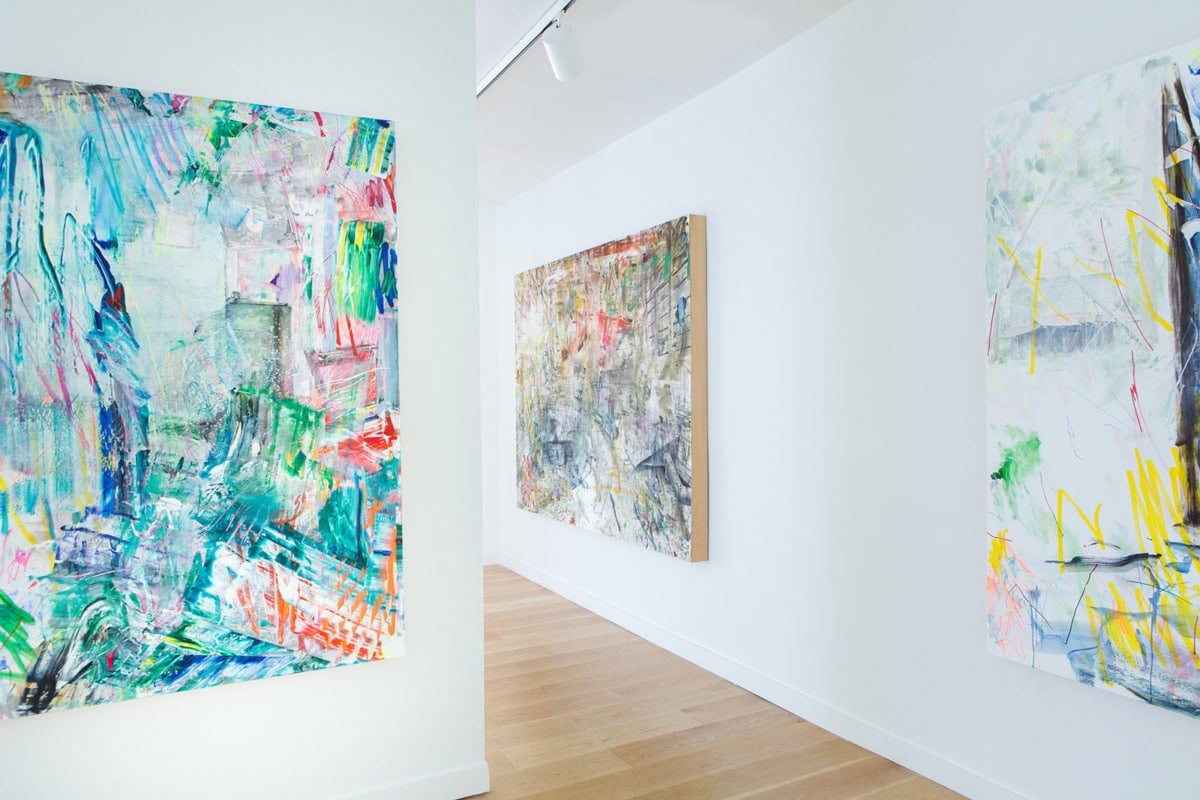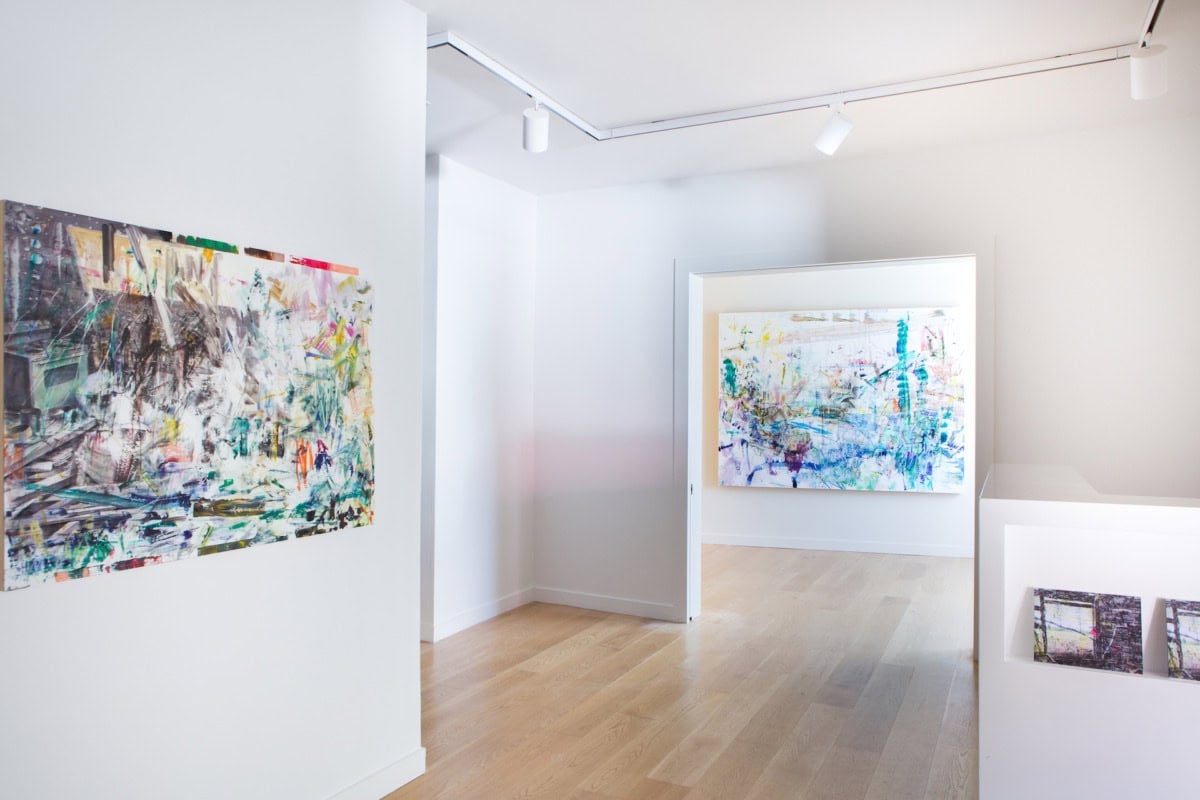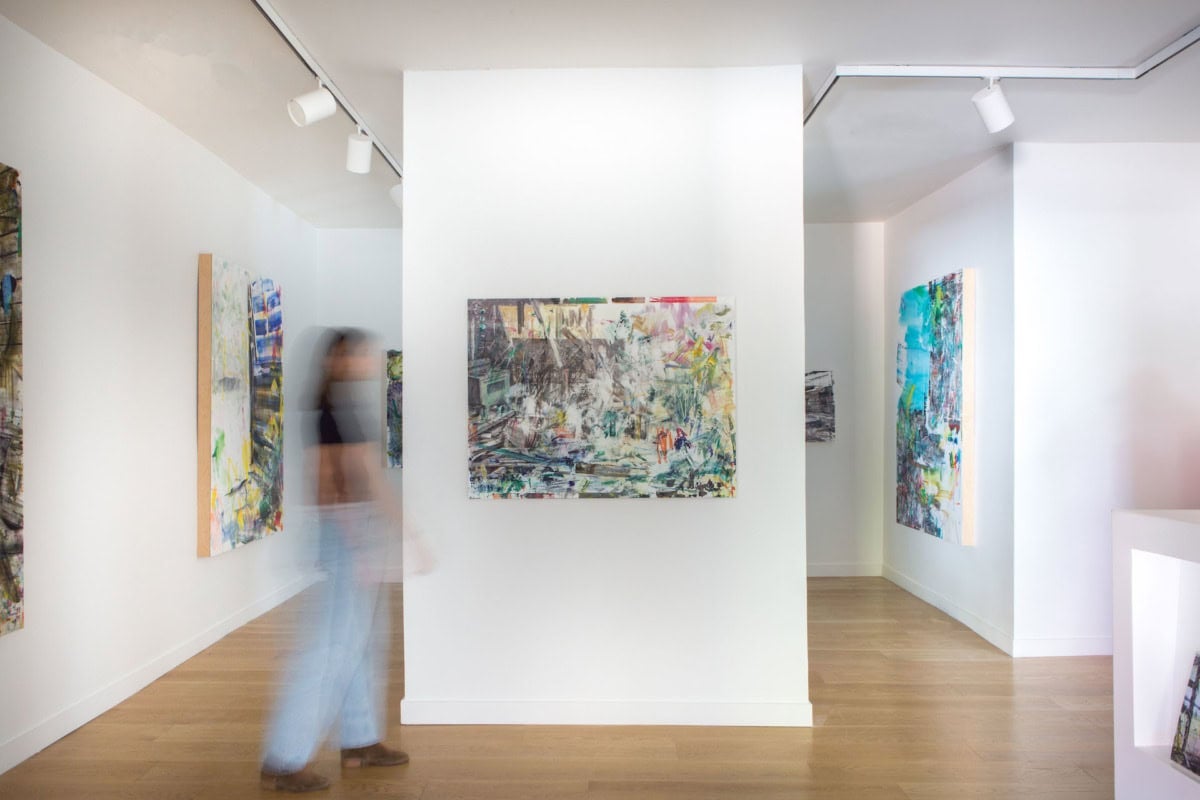
Damian Stamer has established himself as a sort of documentarian of rural decay. His paintings are odes to the dilapidated structures one passes, most often without a thought. These sites fascinated Stamer as a child growing up in Durham County, North Carolina, and they haven’t lost their allure since. He considers the work to be vanitas, immortalizing fragile settlements and wordlessly evoking the transient lives or specters of days-gone-by that haunt them. Stamer has mastered ephemerality. Instead of painting traditionally representational landscapes with crumbling barns or still lives of moth-eaten mattresses beside discarded stoves, he buries his scenes under cacophonous piles of mark-making. His paintings visually recreate something like the experience of zipping past scenery in a car. In his third solo show with SOCO Gallery, and then it wasn’t, Stamer not only expands upon, but advances, the premise of his work.

and then it wasn’t spans 2018 to 2021. The fifteen works on view fill SOCO’s intimate galleries and give Stamer’s followers insight into what he’s been up to in the three years since his last solo show there. All of the familiar Stamer-isms are present. Ramshackle interiors, abandoned appliances and furniture, rough-cut fields and scrubby trees. Anyone who has traveled the backroads of the American south will recognize them immediately. Of course all of this imagery is obscured with Stamer’s trademark gestures and smears. He tackles rural scenes with modernism, unapologetically maintaining the ethos of both of these divergent perspectives. In works such as St. Mary’s Rd. 9 and Horry County 28, however, Modernism dominates. The surface of these paintings is so built up in places that it verges on impasto, adding a new level of texture and, by extension, obfuscation. These are perhaps the most abstract and least readable works in the exhibition, but they are still anchored in Stamer’s pastoral image bank. St. Mary’s Rd 9 has a whiff of a barn entrance, while Horry County 28 depicts its own portal with a lean so severe and jagged it could only be found on a rural ruin. Blue sky still cheerfully pushes through both openings, reminding viewers that the country can look bucolic and be wasting away all at once.
Throughout his work and this exhibition, Stamer uses a varied palette that is sometimes colorful and bright, but other times somber, dark or earthy. Horry County 22, for example, is rendered in browns, blacks and blues. It is an interior scene of a cabin with wood slat walls painted in washy brush strokes and splatters. A mattress with blurred edges rests in the corner and hatched marks across the floor indicate debris. Horry County 26, with its similar hues and tones, reads like another corner of the same dwelling. This time, viewers glimpse a stove turned toward the wall and unmoored from the place it was once functional. The more that can be seen in Stamer’s work, the more melancholy the mood.
and then it wasn’t culminates in SOCO’s newly-constructed project space. Its white walls, clerestory windows and vaulted ceiling make it feel like a cross between a barn and a chapel built specifically for art. It’s a sizable room, but only three Stamers are installed there. Horry County 16 is the largest and darkest of the three. It holds the center while Horry County 20 and New Sharon Church Rd. 99 flank it on either side. This is the room where viewers will feel the weight of and then it wasn’t most palpably. Away from the main galleries filled with more brightly colored paintings, viewers are faced with what, exactly, isn’t. The dark, frenetically rendered barns viewers peer out of in Horry County 16 and Horry County 20 are all but obliterated in New Sharon Church Rd. 99. Any visible structure or recognizable object is nonexistent. Only neutral tones and marks that vaguely denote the texture of wood remain. Not even a blue sky or green tree push through. Perhaps New Sharon Church Rd. 99 is the rubble pile and we are standing on it. The barns and shacks have finally given way and the transformation is complete. Still, nothing feels final in Stamer’s work. Even in reaching ground zero, an energy of renewal reverberates throughout his Modernist marks. The sense that the wheel will turn and the cycle will begin again is undeniable.

Damian Stamer: and then it wasn’t, is on view at SOCO Gallery thru December 22.




